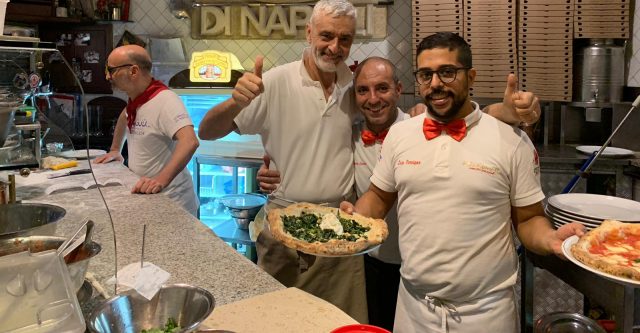Grand Vintage 2012: the synthesis of Moët & Chandon
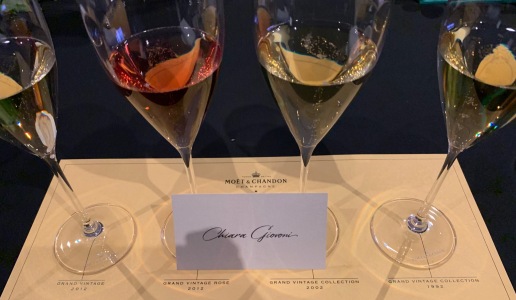
The “small miracle” of the 2012 harvest has arrived in the bottle both as a Blanc and a Rosé thanks to the great experience and interpretive skill of Chef de Cave Benoît Gouez.
The famous saying “those who cannot remember history are condemned to repeat it” obviously refers not to great achievements but great failures. And this was the theme of the tasting conducted by the Chef de Cave of the Grand Maison de Champagne for the presentation of the latest Grand Vintage, produced from the 2012 harvest. Moët is recognized around the world as the “Maison of glamour” but the winemaking design behind every bottle is the perpetuation of a savoir-faire which since 1743 has produced an identifiable style that is the result of a contemporary vision of Champagne.
In explaining the genesis of Grand Vintage 2012, Benoît Gouez underscored the inspiration behind its creation in 1842, only 74 bottles, the total freedom to interpret the harvest in the framework of what is at the heart of all of Moët’s production: elegant maturity, seductive mouthfeel and lively fruit. A vintage wine expresses the characteristics of the best harvests and it is important to understand the difference between a vintage and a non-vintage Champagne. According to Benoît Gouez, his greatest challenge every year is posed by the non-vintage Moët Impérial that is produced in large numbers for sale throughout the world and must be consistent year after year to be true to itself.
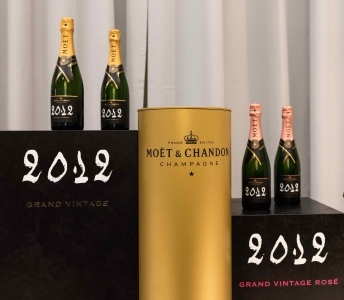
Grand Vintage is the antithesis of Moët Impérial in that it a quest for the absolute individuality of the year, the combination of creative spirit and originality, and this means the Chef de Cave has the utmost freedom to interpret. Benoît Gouez began the tasting with a lesson in agronomic history of Champagne in recent years because he believes that in order to understand the specific nature of 2012 one needs to understand the state of the vineyards that produced this harvest. Grand Vintage 2012 came after the 2009, it was not produced in 2010 and 2011, and according to Benoît Gouez it represents the synthesis of the distinctions between vintages 2008 and 2009. The first was celebrated for its tension and austerity, the result of a cool year that produced a sharp acidity, while the latter was distinguished by fruitiness and richness, produced by a warmer, “modern” season.
The decision not to produce the 2010 and 2011 vintages was intentional and exceptional because, Benoît Gouez recalled, the last time Moët did not come out with a vintage wine two years in a row was way back in 1967 and ’68. What this underscores is that, despite climate change playing in Champagne’s favor, allowing the grapes to reach full maturity, and despite the technical advancements made in winemaking, Maison Moët’s standards remain very strict in regard to achieving excellence.
All things considered, 2010 was not a bad year but it was heterogeneous in regard to the maturity and the health of the grapes due to some botrytis cinerea attacks that made an extreme selection of the grapes imperative. This allowed for the production of a vintage wine but not enough from the 2010 harvest to augment the vins de reserve that are essential to ensure the consistency of Moët Impérial, which always has priority.
The 2011 harvest was very promising and very precocious but in mid-August a heatwave came followed by downpours equal to two months of rain. The vines were never recovered and there were not enough ripe grapes to produce a vintage wine. There was great apprehension at the Maison in 2012 because it has not been since the beginning of the 20th century that they did not make a vintage wine three years in a row. This fear became even greater when the 2012 season proved catastrophic up until the end of August. Every negative meteorological-related phenomenon possible took place: frost, rain, peronospora, powdery mildew, millerandage, hail and drought. Then, in September, all of Champagne benefitted from what was called a “small miracle”, even if 40% of potential yield was lost. What made the 2012 so unique were the diurnal temperature variations that allowed for the production of sugar while preserving the acidity, creating an unusual balance previously seen only in 2002. The key to interpreting the year was obviously in the blending where the secret to bringing together boldness and finesse lies in balancing the varietals and, in particular, the use of Pinot Meunier that enhances the center of the mouth. A small miracle made possible by the nature of the varietals and manifested in the bottle both as a Blanc and a Rosé thanks to the great experience and interpretative skill of Benoît Gouez, a master of great charisma.
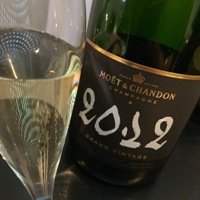 Moët & Chandon Grand Vintage 2012
Moët & Chandon Grand Vintage 2012
97/100 – € 75
A blend of 41% chardonnay, 33% Pinot Noir and 26% Meunier that offers a complete and rewarding experience that begins with its intense attack, even in regard to the bouquet, and is perpetuated by the full and wrapping mouthfeel and fresh and vital finish. Although 2012 may have been a vintage of contrasts for the other Maisons, Moët was able to achieve great harmony while, at the same time, maintaining an extra-brut dosage, 5g/l, which Benoît Gouez insists upon for his vintage wine. The bouquet of linden flower with citrus notes slowly explodes into one with summer fruit, while the concentrated and dynamic structure of the mouthfeel slowly produces a generous elegance for a persistent and deeply iodine finish.
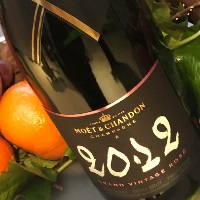 Moët & Chandon Grand Vintage Rosé 2012
Moët & Chandon Grand Vintage Rosé 2012
96/100 – € 80
Producing the rosé version is always more challenging than the white. The blend here is 42% Pinot Noir 13% of it red wine, 35% Chardonnay and 23% Meunier with a dosage again of 5g/l. The key to blending the rosé lies in maintaining softness in counterpoint to the grapiness and acidity. The Pinot Noir in Grand Vintage Rosé adds a hint of tannins to the structure and the percentage of red wine in this 2012 is the lowest ever. This to not modify the aromatic quality and stability of the color and made possible by using Grand Cru Ay grapes that are more intense and rich and thus less red wine is needed. According to Benoît Gouez, this makes the wine more elegant. While intense, this Champagne has a sophisticated refinedness, the tannins never become heavy or bitter, with a vivacious freshness of wild, red berries and nuances of aromatic herbs and light notes of oriental spice, while black tea distinguishes the finish.
Related Products
| Product | Producer | Date of publication | Author | Read | |
|---|---|---|---|---|---|

|
Grand Vintage 2012
Champagne |
Moët & Chandon | 06/21/19 | Chiara Giovoni |
A blend of 41% chardonnay, 33% Pinot Noir and 26% Meunier that offers a complete and rewarding experience that begins with its intense attack, even in regard to the bouquet, and is perpetuated by the... Leggi tutto |

|
Grand Vintage Rosé 2012
Champagne |
Moët & Chandon | 06/21/19 | Chiara Giovoni |
Producing the rosé version is always more challenging than the white. The blend here is 42% Pinot Noir 13% of it red wine, 35% Chardonnay and 23% Meunier with a dosage again of 5g/l. The key... Leggi tutto |

|
Moët & Chandon
|
08/02/13 | Redazione |

 Italiano
Italiano








